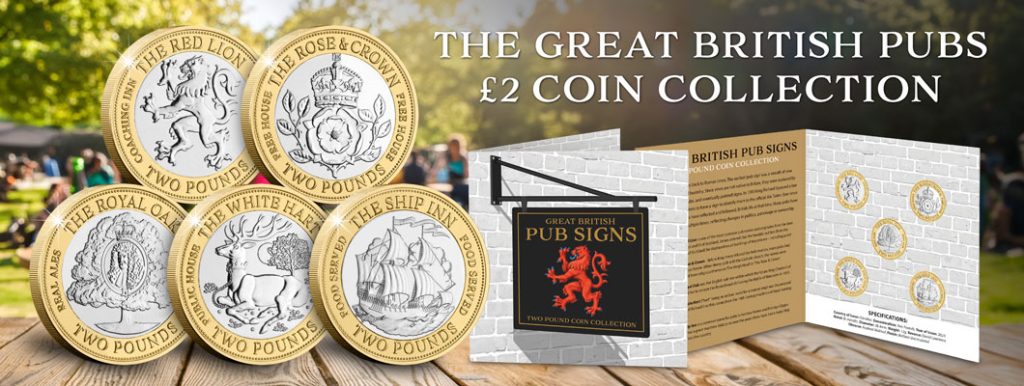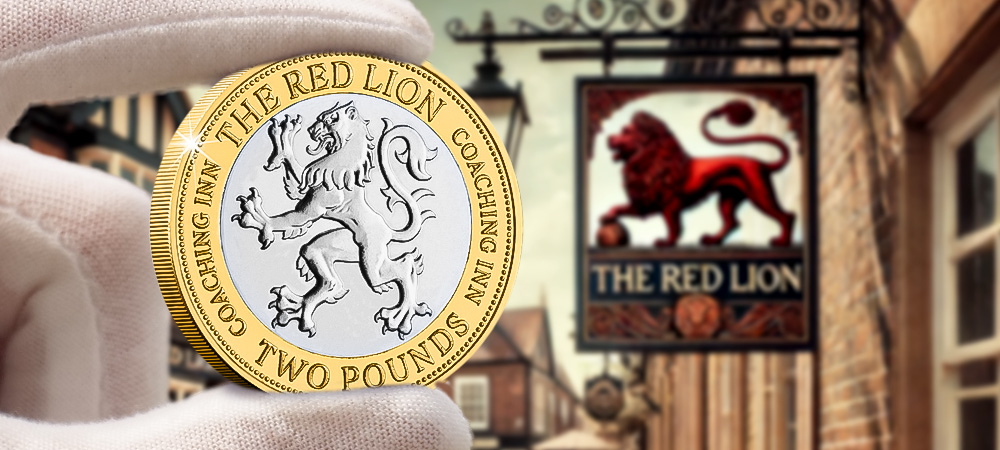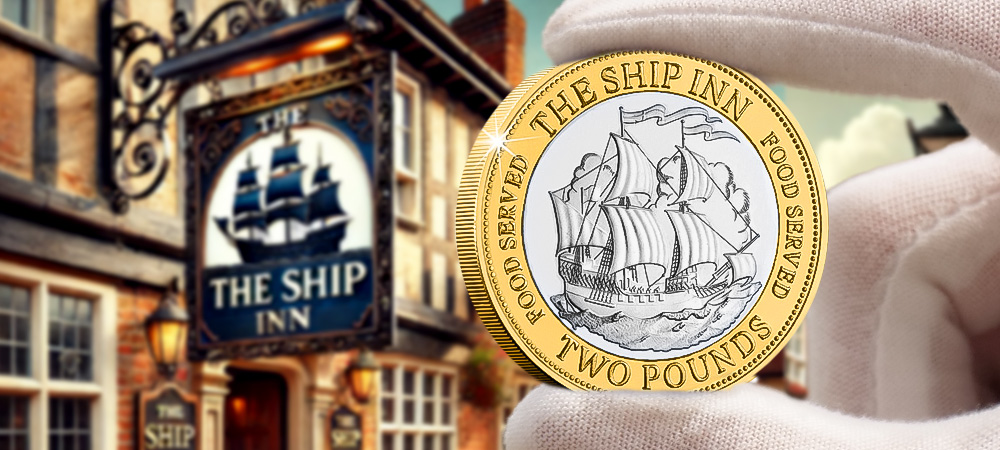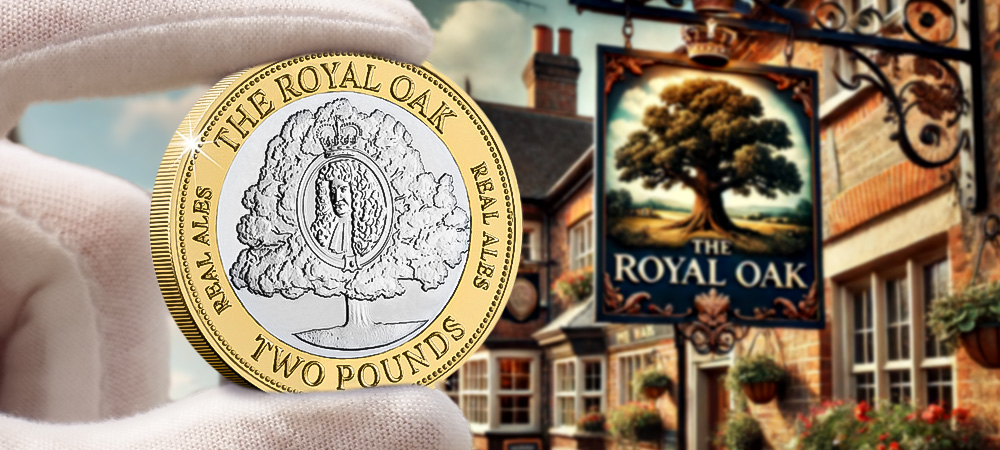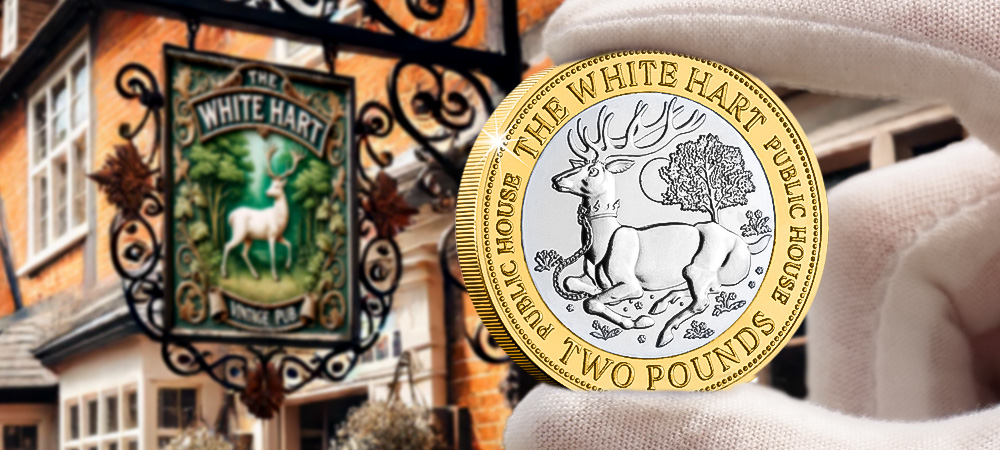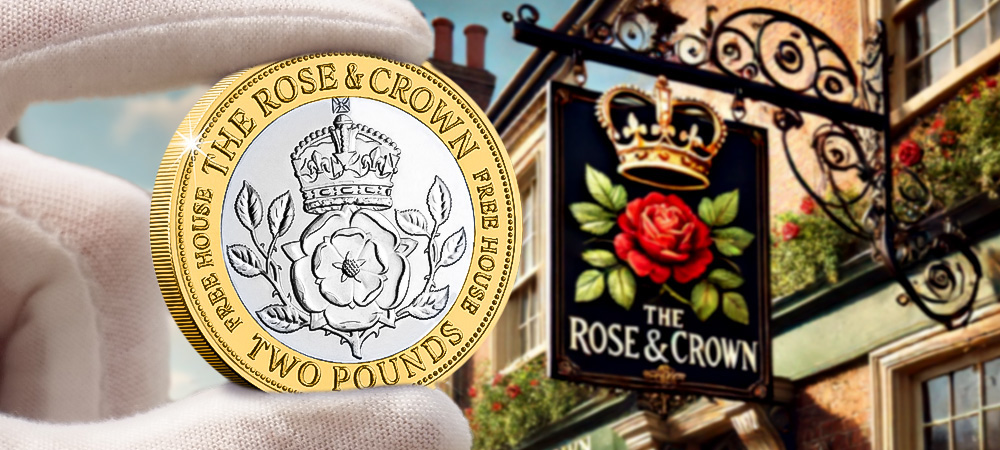Coins
Churchill’s “V for Victory” Campaign: A Leader’s Powerful Symbol of Unity
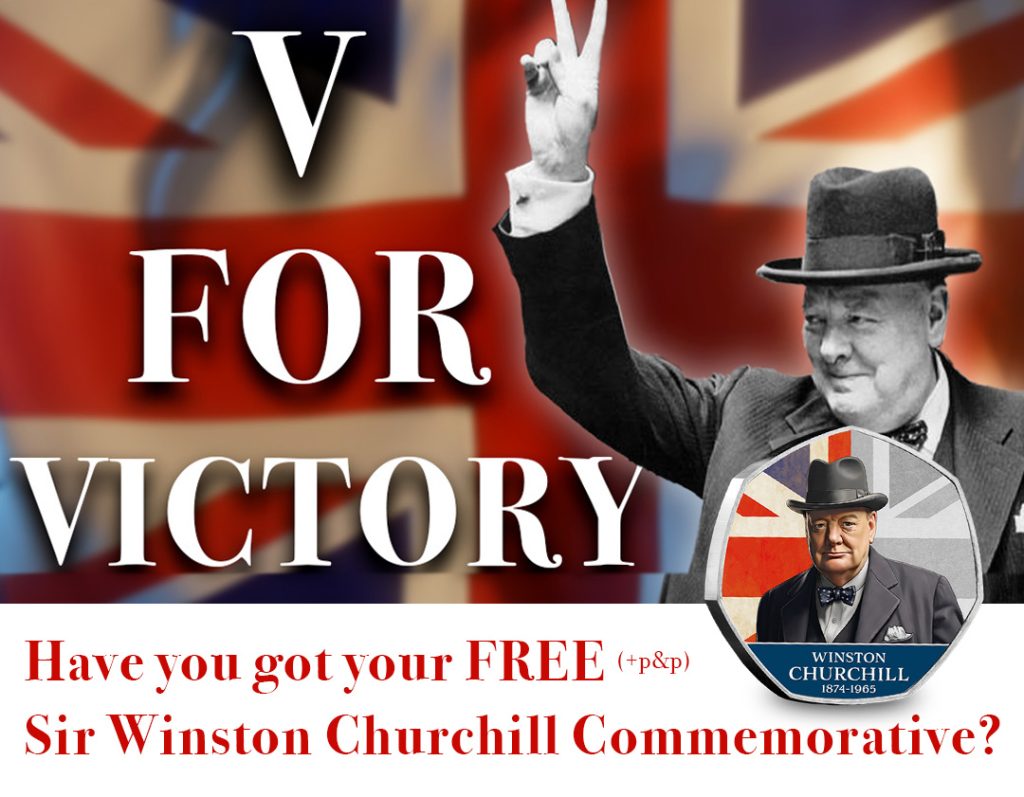
On July 19, 1941, Winston Churchill, our steadfast British Prime Minister, introduced a potent symbol of hope and defiance: the “V for Victory” campaign. This emblem of resistance became a rallying cry for the Allied forces and occupied Europe, showcasing Churchill’s leadership and his ability to inspire a war-torn world.
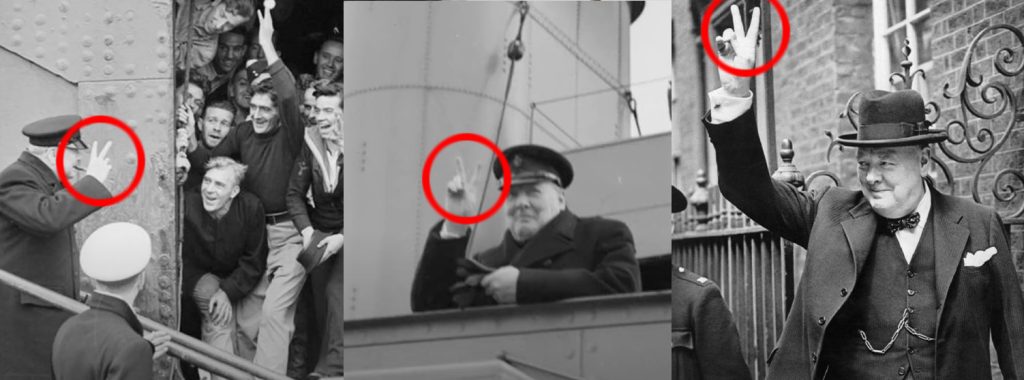
The Origin of the “V” Symbol
The idea of using the letter “V” as a symbol of victory came from Victor de Laveleye, a Belgian politician and broadcaster. In January 1941, de Laveleye suggested that “V,” the first letter of “victoire” in French, “vrijheid” in Dutch, and “victory” in English, could unify those resisting the Axis powers. This simple yet profound idea quickly spread, as people across occupied Europe began marking the letter “V” in public places as a silent act of defiance.
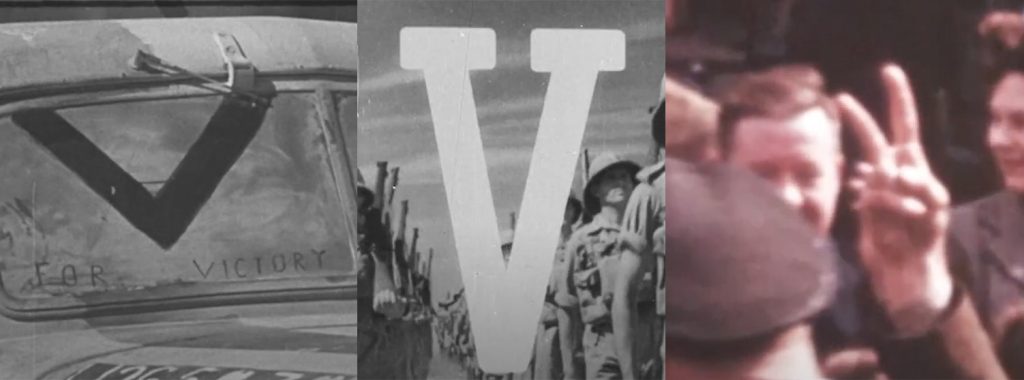
Churchill’s Leadership and Promotion of the Campaign
Churchill saw the potential of the “V” sign to inspire the public. On July 19, 1941, he endorsed the “V for Victory” campaign in a radio broadcast, urging people everywhere to adopt the symbol as a gesture of defiance and hope.
Churchill himself frequently made the “V” sign with his fingers during public appearances, creating a powerful visual connection between his leadership and the cause of victory. This gesture, captured in photographs and newsreels, became synonymous with his indomitable spirit.
The British government supported the campaign vigorously. The BBC integrated the Morse code for “V” (dot-dot-dot-dash) into its broadcasts, often using the opening notes of Beethoven’s Fifth Symphony, which matched this pattern. Posters, leaflets, badges, stickers and even cigarettes helped spread the “V for Victory” message far and wide.
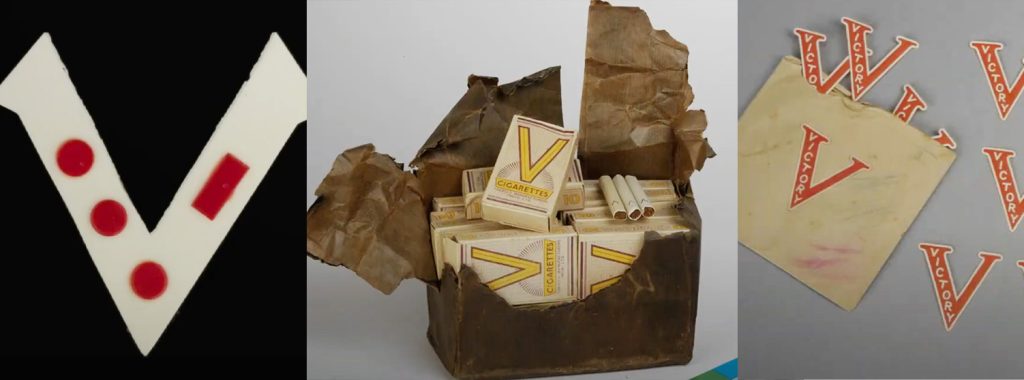
The Impact of Churchill’s Symbol
The “V for Victory” campaign significantly boosted morale in both occupied and free nations. For those under Nazi control, the symbol provided a sense of solidarity and hope, reminding them that liberation was possible. In Allied countries, it reinforced the resolve to support the war effort and remain united against tyranny.
The widespread use of the “V” symbol also had a psychological impact on the Axis powers, demonstrating the resilience and determination of those they sought to subdue.
Today, Churchill’s “V for Victory” campaign stands as a testament to his leadership and the power of symbols in rallying a nation. His strategic use of the “V” sign not only galvanised the war effort but also left a lasting legacy of hope and unity that continues to inspire.
Churchill’s ability to transform a simple idea into a powerful emblem of resistance and victory exemplifies his extraordinary leadership during one of history’s darkest times. The “V” sign remains a timeless symbol of the enduring human spirit and the fight for freedom.
Thank you for reading.
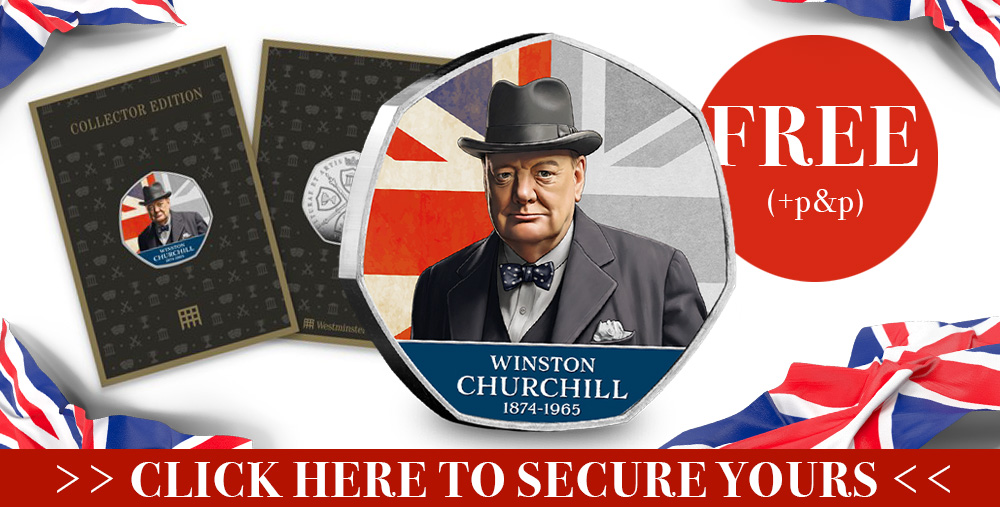
>>> Click here to secure your Sir Winston Churchill Commemorative now <<<
CLOSER LOOK: The history-making vehicles that inspired an impressive set of 50ps…
This year, we’re celebrating 120 years of thrilling competition and daredevil feats with the NEW Isle of Man History of Motor Racing 50p Set.
We travelled to The National Motor Museum in Beaulieu where we met Patrick Collins – Curator: Vehicles and Research – who gave us a closer look at the history-making vehicles that inspired these impressive 50ps…
Watch our video below:
The Isle of Man Motor Racing 50p Set
Available exclusively from The Westminster Collection, this new 50p Set celebrates FIVE Motor Racing FIRSTS with each design featuring an iconic vehicle from history.
1904 – The FIRST Motor Race
The first motor race held on the Isle of Man decided Britain’s representatives for the Gordon Bennett Cup, marking the dawn of competitive Manx Motor Racing. Walter Thomas Clifford triumphed, covering the gruelling 255-mile course in 7 hours and 26 minutes in his Napier.
1907 – The FIRST Isle of Man TT Race
Fast forward to 1907, and we arrive at the birth of an iconic event – The first TT (Tourist Trophy) Race which was won by Rem Fowler on a Norton. This world-famous motorcycle race is synonymous with the Isle of Man and has been celebrated on a series of Isle of Man £2 Coins too!
1923 – The FIRST TT Sidecar Race
1923 was a landmark year for Manx Motorsports. First, the TT Sidecar Race was introduced – adding an extra layer of excitement to the race. The first Sidecar race was won by Freddie Dixon and passenger Walter Denney, who rode a Douglas to victory.
1923 – The FIRST Manx Grand Prix
1923 also marked the inaugural Manx Grand Prix. Known as the amateur’s alternative to the TT, the first Grand Prix was won by Len Randles on his 500cc Sunbeam.
1963 – The FIRST Manx Rally
Rounding out this extraordinary set is the coin celebrating the first Manx Rally in 1963. This landmark event was won by Reg McBride and Don Barrow in a Ford Anglia Allardette.
Available Exclusively from The Westminster Collection
You can view the Complete Isle of Man Motor Racing 50p Range on The Westminster Collection website. Prices start from JUST £37.50 and I’ve already seen SELL OUTS.

The inspiration behind The Great British Pubs £2 Collection 🍻
“The pub sign says: you are still in England. Come in here and – however far from home you are, however, outlandish our name – you will find the comforts of your local town or village.”
Sebastian Faulks, ‘Icons of England’. Edited by Bill Bryson, 2010
Following the special release of The Great British Pubs Collection, we wanted to delve into the history behind the iconic pub signs featured on the coins themselves.
It turns out the concept of a pub sign has been around for over 1,000 years! Spawning from the Roman custom of hanging vines outside to let thirsty travellers know they would soon have refreshment – combined with the Roman’s arrival in England, and the lack of grape vines to drape across the pub entrance, an evergreen bush was used as an alternative. So, pubs named The Bush or The Holly Bush owe their name to this ancient custom. The very first sign that there was a pub nearby…
The pub sign as we know it today was actually a royal decree. In 1393 King Richard ordered, ‘That whoever shall brew ale in the town, with the purpose of selling it, shall hang out a sign otherwise he shall forfeit his ale.’ As a result, many ale houses began to display signs. But with many still being unable to read it was necessary to use painted pictures so the establishment could be clearly identified.
So, keep reading below to explore the origins of each pub featured on the brand new £2 coin collection.
The Red Lion
The Red Lion is probably one of the most common names for a pub. It originates from the time of James VI of Scotland and I of England, uniting the Scottish and English crowns in 1603.
To emphasise the newfound union between the crowns of Scotland and England, James decreed that the heraldic red lion of Scotland should be displayed on all buildings of importance – which included pubs.
The Ship Inn
As a maritime nation, there is a rich tradition of seafaring and trade that has resulted in many pubs having a name related to ships.
In some cases, the ships depicted on these signs were specific, such as Victory, Vice-Admiral Nelson’s flagship.
The Royal Oak
Another popular pub name is The Royal Oak. Originating after the Battle of Worcester in 1651, fought during the English Civil War.
Charles II’s Royalist Army was defeated during this battle by Cromwell’s Parliamentarians. Charles then had to flee for his life, seeking refuge in the form of a great oak tree near Boscobel House in Shropshire – with hopes that he would not be spotted by Cromwell’s men.
His plan succeeded and having evaded capture, Charles II went on to be restored to the throne. As a result of this dramatic tale of cunning escape, the tree became known as the Royal Oak and pubs across the country were named in tribute.
The White Hart
As mentioned at the beginning of this blog, it was the 1393 decree of Richard II that made pub signs compulsory. The White Hart was Richard’s personal badge and so many pubs chose to adopt the name at the time.
There’s even a Grade II listed sign for The White Hart in Bletchingley, Surrey – dating back to the 18th century. It is shown in the image below.
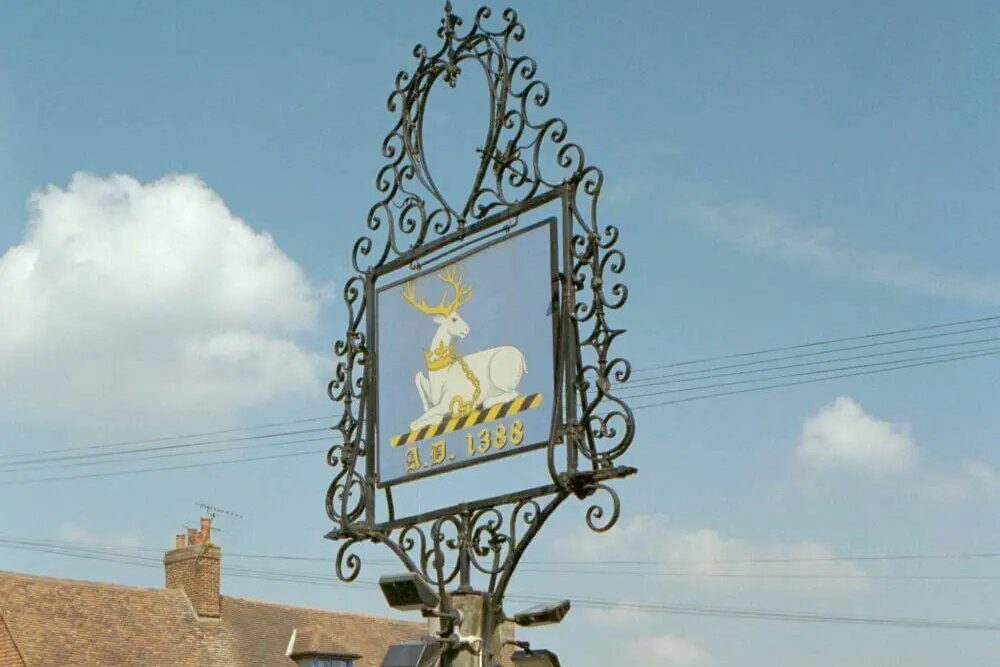
The Rose and Crown
Rooted in a key event of British history, The Rose and Crown celebrates the end of the War of the Roses 1455-1487. A series of civil wars for the throne of England between two competing royal families: the House of York and the House of Lancaster.
The result was the uniting of the red rose of Lancaster and the white rose of York when Henry Tudor married Elizabeth of York. Hence the literal phrasing of the rose and crown together, united.
Where you can get your set today
The Great British pub is at the heart of the community. As you’ve read, this has been the case for generations, so celebrate this integral part of Britain’s culture with The Great British Pubs £2 Coin Collection!
These coins are not just a tribute to the historic artwork above pub entrances, but also a celebration of the stories and memories created within their walls.
Click here to secure yours today >>>
